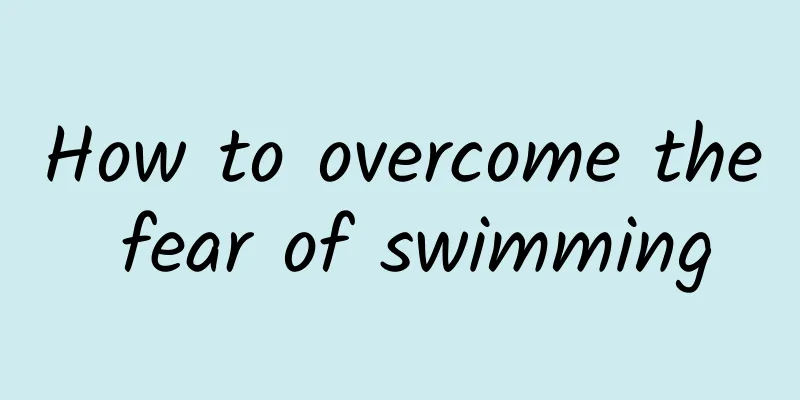How to overcome the fear of swimming

|
Fear of swimming is also quite common, especially when there has been an accident while swimming, which will cause extreme fear of swimming. For such people, certain methods can be used to overcome it, and it can be gradually alleviated with the help of others, such as walking in water, breathing in water and other exercises, to gradually overcome the fear of swimming. 01Walking in water It is generally recommended that beginners start in relatively shallow water, at least enough to keep your head above water and able to walk in the water. This is the first step. It allows you to experience resistance, get a better feel for the movement in the water, and learn how to maintain your balance in the water. Step 1: Hold the edge of the pool (shore) or your companion's hand and walk in the water. Step 2: Hold the edge of the pool (shore) or your companion's hand with one hand, and use the other hand to paddle outward and backward in front of your body while walking in the water. Step 3: Without any support, move your arms symmetrically to the left and back in front of your chest and walk forward, sideways, and backward in the water with your feet. If you feel bored, you can also play some related games with your friends to increase the fun, such as chasing in water, eagle catching chickens, etc. 02Breathing in water Beginners should understand that swimming without breathing cannot be called swimming, it can only be called holding your breath, which is not enough. The correct way to breathe while swimming is to inhale through your mouth and exhale through your mouth or mouth and nose. Stand in shoulder-deep water, hold onto the edge of the pool (shore) with both hands; or hold onto your companion's hand, take a deep breath through your mouth, then bury your head in the water, slowly exhale through your nose until all the waste gas in your body is exhaled, then quickly raise your head and inhale through your mouth. Be proficient in the above techniques, be able to complete multiple exhalation and inhalation techniques continuously, coherently and naturally, and require yourself to independently complete the slow exhalation and fast inhalation movements. 03Floating in the water After completing the first two movements, you can try the more interesting floating in water. Its main purpose is to experience the buoyancy of water on the human body, and initially master the human body's ability to balance in water, and eliminate the fear of water. You can practice floating in the following ways: ① Knee-hugging floating exercise Stand on the bottom of the water with both feet, take a deep breath, then squat down, lower your head and hug your knees. Bring your knees as close to your chest as possible, push off the bottom of the water with the front of your feet, and curl up in a posture with your head down and your knees hugged. Try to relax your body and float naturally in the water. When standing, extend your arms forward, press the water down and raise your head. At the same time, straighten your legs and stand with your feet touching the bottom of the water, with your arms naturally placed at your sides. ② Floating exercise Stand with your feet apart and your arms stretched forward with relaxation. After taking a deep breath, lean forward and lower your head. Gently push your feet off the bottom of the water and float on the water in a prone position. Spread your arms and legs naturally. Relax your whole body and fully stretch your body. When standing, tighten your abdomen and legs, press the water down with your arms, then raise your head, straighten your legs, and stand with your feet touching the bottom of the water. ③Glide and float exercises The first is the edge-gliding and floating exercise: turn your back to the edge of the pool (shore), hold the edge of the pool (shore) with one hand, extend one arm forward, and at the same time, stand on one foot and keep the other foot close to the edge of the pool (shore). After taking a deep breath, lower your head and lean your upper body forward in the water into a prone position. Tighten your legs as much as possible, keep your buttocks close to the edge of the pool (shore), and keep the soles of your feet against the edge of the pool (shore). At the same time, the arm holding the edge of the pool (shore) is swung forward and close to the forearm, with the head clamped between the two arms. At this time, the two feet push out with force and slide forward in a streamlined shape. |
<<: How do sensitive people adjust their mentality?
>>: What are the symptoms of postoperative thrombosis?
Recommend
Can brushing your teeth with salt water cure bad breath?
Brushing your teeth with salt water has a certain...
The efficacy of foot bath with mugwort and ginger
Using mugwort and ginger slices together for foot...
What is the reason for the yellow tongue coating in children? How to deal with it
If a child's tongue coating turns yellow, peo...
Is cupping useful for cervical spondylosis?
Cupping is a common cup-shaped tool that squeezes...
What will happen to a woman with a deep philtrum? What does the depth of the philtrum represent?
If a woman has a deep philtrum, she should also u...
What teas are good for the stomach?
With the rapid development of modern society, sto...
Will the fetal movement be frequent if there is less amniotic fluid?
Pregnant mothers are very sensitive to fetal move...
The efficacy of pine needle enzyme
Pine needle enzyme is a nutrient with relatively ...
What can you eat to replenish your heart quickly if it is ischemic? Fresh fruits and vegetables are the first
Because of the lack of attention to diet and high...
Is hemoptysis from tuberculosis serious?
Coughing up blood due to pulmonary tuberculosis i...
Wen Shen Qing Fei Decoction
When we are busy at work, we have no time to take...
How to treat heart failure caused by rheumatic heart disease
The symptoms of rheumatic heart disease are not p...
What to do if you have back pain from sitting for a long time
People who sit for long periods of time will find...
What should I do if the fat particles on my back fall off with a pinch?
If the oil particles on the back fall off when yo...
How to treat cerebral atrophy and cerebral infarction
Brain atrophy can affect the patient's intell...









